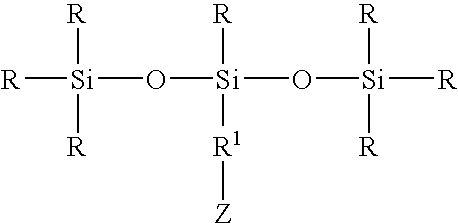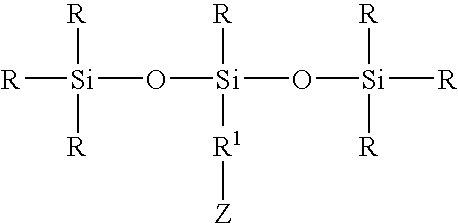Fungicidal composition for through periderm bark application to woody plants
a technology of periderm bark and composition, applied in the field of fungicidal compositions, can solve the problems of affecting the growth of oak trees, not being very effective, and affecting the growth of spruce,
- Summary
- Abstract
- Description
- Claims
- Application Information
AI Technical Summary
Benefits of technology
Problems solved by technology
Method used
Image
Examples
example 1
[0066] Five inoculated oaks were selected and four were treated with various phosphite solutions by employing varying methods or techniques of application. The characteristics of the solution and the method of application are set forth in Table I along with the results, which are recorded based upon reduction in canker size (based upon diameter measurements). Obviously, the greater the reduction in the canker size, the more effective the treatment in controlling the disease. As used throughout the specification, unless otherwise designated, the percentages are based upon weight percentage.
TABLE IReduction inSampleIngredientsMethodCanker Size18% phosphiteinjection˜60%solution20.5% phosphitefoliar application˜40%solution30.5% phosphitesoil drench˜20%solution413% phosphitetopical bark˜0%solutionControln / an / a0%
[0067] The methods of application set forth in Table I were as follows. The injection method refers to a method whereby a hole of approximately 3 / 16″ diameter was drilled near t...
example 2
[0069] Three inoculated trees were selected and a second set of trials were run using various solutions and techniques in a similar fashion to Example 1. The ingredients of the solution, the method of application, and the results are set forth in Table II.
TABLE IIReduction inSampleIngredientsMethodCanker SizeControl45.8% phosphiteinjection˜80%solution575% phosphite -topical bark˜80%25% surfactant625% phosphite -topical bark˜80%75% surfactant
[0070] With respect to those solutions that employed the surfactant, the surfactant was obtained under the tradename QUICKWET™ 357, which is believed to include about 90 weight percent organosiloxane surfactant and about 10 percent coupling agent. The phosphite solutions employed in Samples 5 and 6 included about 45.8% phosphite, which was similar to that used in the control, and the percentages set forth in Table II refer to the volume percent of the overall composition when mixed with the surfactant (e.g., 75 volume percent of the 45.8% phosp...
PUM
 Login to View More
Login to View More Abstract
Description
Claims
Application Information
 Login to View More
Login to View More - R&D
- Intellectual Property
- Life Sciences
- Materials
- Tech Scout
- Unparalleled Data Quality
- Higher Quality Content
- 60% Fewer Hallucinations
Browse by: Latest US Patents, China's latest patents, Technical Efficacy Thesaurus, Application Domain, Technology Topic, Popular Technical Reports.
© 2025 PatSnap. All rights reserved.Legal|Privacy policy|Modern Slavery Act Transparency Statement|Sitemap|About US| Contact US: help@patsnap.com


